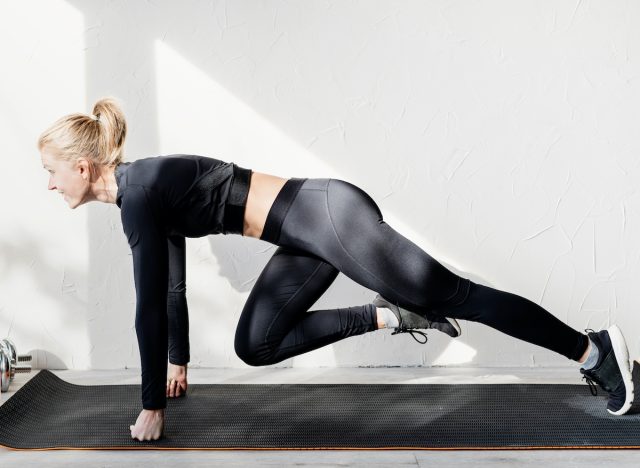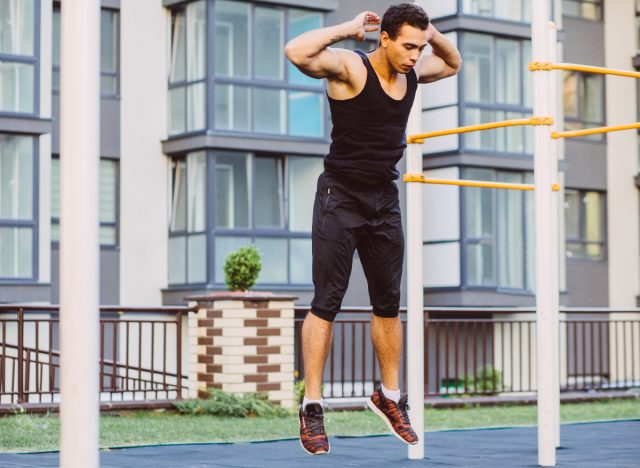If You Can Do This Many Burpees at 50, You’re Fitter Than 90% of People Your Age

The burpee is one of the most misunderstood exercises in fitness. It may seem simple on paper, but executing it well requires strength, coordination, endurance, and mental fortitude. And while many people try to avoid them, the truth is, mastering burpees is one of the best ways to prove you’re in excellent shape, especially after 50.
At this stage of life, your workouts should focus on more than just burning calories. You need movements that challenge your entire body, keep your heart strong, and build functional strength that carries over into everyday life. That’s where burpees come in. They train your body as a unit, forcing you to move with purpose, speed, and control. If you can knock out a solid set of burpees with good form, you’re doing better than most of your peers.
Burpees are more than just a conditioning tool. They are a direct test of full-body athleticism. Your muscles, lungs, and nervous system all work together to complete each rep. The higher your rep count, the better your physical capacity. And if you’re hitting specific numbers at age 50 or older, you’re outperforming the majority of adults your age.
So, how many burpees do you need to do to be considered fit at 50 years old? First, let’s break down the movement and explain what makes it such a powerful performance marker.
Why Burpees Are the Ultimate Full-Body Test

Burpees combine strength, power, endurance, coordination, and mobility into one continuous movement. Here’s what they challenge:
- Legs: Squatting and jumping fire up your quads, glutes, and calves.
- Core: Every rep demands stability and control in your abs and lower back.
- Upper Body: The push-up portion recruits your chest, shoulders, and triceps.
- Cardiovascular System: Performing multiple reps in succession keeps your heart rate elevated and improves conditioning.
You’re essentially blending a squat, a push-up, a jump, and a plank into one explosive exercise. That’s why burpees torch calories, improve heart health, and build mental toughness. They require your entire body to move in sync while managing fatigue and maintaining technical soundness.
How to Do a Perfect Burpee

The classic burpee involves a squat, kickback, push-up, return, and jump. Here’s how to perform it with solid form:
- Start standing: Position your feet about shoulder-width apart.
- Squat down: Place your hands on the ground in front of you.
- Kick back: Jump your feet into a high plank position. Keep your core tight.
- Push-up: Lower your chest to the floor, then press back up to the starting position.
- Jump forward: Explosively bring your feet back under you.
- Jump up: Finish the rep with a small vertical jump and reach overhead.
Form tip: Stay smooth and controlled. Avoid letting your lower back sag during the plank or push-up portions of the exercise.
Burpee Standards at 50: How Many Reps Is Impressive?

Here’s a simple way to gauge your fitness level using a 1-minute max-rep test. Set a timer for 60 seconds and count the number of full burpees you can complete with good form.
Men (Age 50+)
| Fitness Level | Burpees in 1 Minute |
| Elite | 20+ reps |
| Excellent | 17–19 reps |
| Good | 13–16 reps |
| Average | 10–12 reps |
| Below Average | <10 reps |
Women (Age 50+)
| Fitness Level | Burpees in 1 Minute |
| Elite | 18+ reps |
| Excellent | 15–17 reps |
| Good | 11–14 reps |
| Average | 8–10 reps |
| Below Average | <8 reps |
These numbers reflect control, full range of motion, and consistency, not rushing or flailing through reps. If you can consistently hit the “excellent” or “elite” range, you’re among the fittest in your age group.
Smart Burpee Modifications for Over 50

If you have joint issues, are recovering from an injury, or simply need to scale back, you can still train the burpee pattern safely. Try these lower-impact variations:
- Incline Burpee: Place your hands on a sturdy bench or box to reduce pressure on your knees and wrists.
- Step-Back Burpee: Instead of jumping your feet back, step one leg at a time into the plank position.
- Push-Up-Free Burpee: Skip the push-up portion if shoulder or elbow discomfort limits your range of motion.
- No-Jump Burpee: Replace the final jump with a controlled stand to minimize joint impact while maintaining your heart rate.
Start where you are, not where you think you should be. Focus on consistency and clean reps. You’ll progress faster and stay injury-free.
Exercises That Improve Your Burpee Power

Burpees demand strength, mobility, and endurance. Add these exercises into your routine to boost your performance:
- Bodyweight Squats: Build lower-body strength for the squat and jump phases.
- Push-Ups: Focus on improving the upper-body portion of the movement.
- Planks and Mountain Climbers: Strengthen your core and improve control in the plank phase.
- Jump Squats: Build explosive power and stamina for the jump portion.
- Step-Ups or Box Jumps: Train coordination and hip mobility while increasing work capacity.
Tips to Increase Your Burpee Count

Improving your burpee performance takes smart training and patience. Use these tips to level up:
- Use intervals: Try 30 seconds on, 30 seconds off for 4 to 5 rounds to build capacity.
- Practice 2 to 3 times a week: Build familiarity and reduce fatigue through repetition.
- Focus on breathing: Exhale during the jump and push-up to stay relaxed and efficient.
- Stay consistent: Progress comes from showing up, not just pushing hard once a week.
- Keep your reps clean: Form first. Fatigue second. Don’t trade quality for speed.
Final Takeaway
At 50 and beyond, your workouts should reflect your goals for long-term strength, heart health, and resilience. Burpees check all the boxes. They push you, challenge you, and reveal how well your body works as a whole. If you can knock out a high number of burpees with solid form, you’re in the top tier of fitness for your age.
Use the 1-minute test to benchmark your current standing. From there, modify where needed, train smart, and build toward a higher score. There’s no better feeling than moving well, feeling strong, and proving to yourself that age doesn’t define your limits.